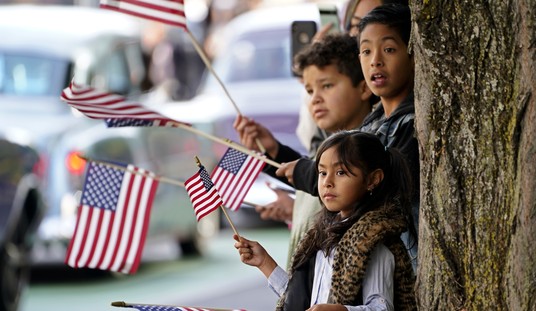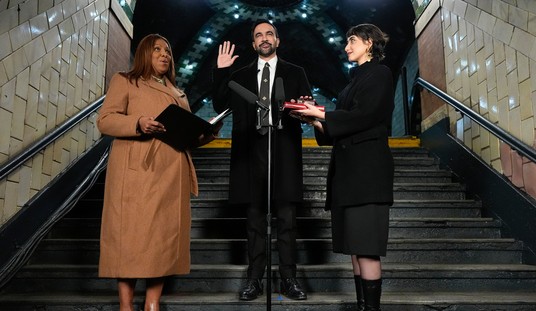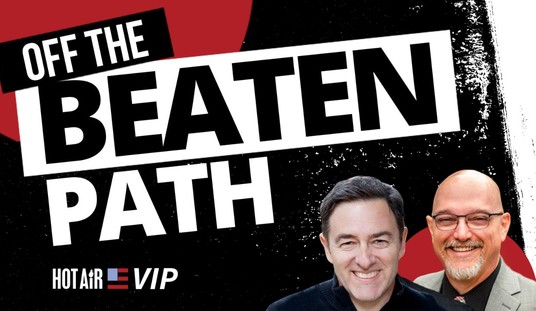Cracker Barrel has reversed course and is restoring its old logo, and presumably will rethink its entire "rebranding" effort.
That's the good news for the company. It's stock price is rising for the moment--after having lost somewhere between $100 million and $200 million in value (the larger number is calculated based on the low, and the former is where things settled after the panic).
However, the bad news, at least for the Board and CEO, is that it has been revealed that they were warned about the impending disaster and decided that the MBAs were correct, while the investor who made the warnings was wrong.
8⃣ Aug. 22, 2025: Calls to "Fire the CEO"
— Asra Nomani (@AsraNomani) August 26, 2025
Cracker Barrel investor Sardar Biglari also owns @SteaknShake, which posts a message, mocking the rival's new logo and 3 words: "FIRE THE CEO."
Read the whole saga @FoxNews @FoxBusiness: https://t.co/vYBRXFzH5v pic.twitter.com/Pbty12XABZ
CEO Julie Felss Masino relied on all the right metrics, at least she thought so. And metrics are a key part of running a company well. But what they don't tell you is, in many cases, far more important than what they do. When Apple designs a product, the key to its success is not in the tech specs or anything easy to measure--it is in the art of the product itself. Steve Jobs was relentless in perfecting its products, and he turned the company into a juggernaut by, for the most part, ignoring the MBAs when it came to selling the brand. They are good for making the numbers work, but the Jobs/Jony Ive combination created the art that made Apple the premier brand in their market.
"Cracker Barrel is not a broken brand but it has a broken board," he wrote, in a scathing seven-page letter to shareholders.
He laid out his criticisms in a 120-page slide-deck presentation with the title, "CRACKER BARREL IS IN CRISIS," next to the company’s longtime logo of an old man in overalls leaning on a barrel – a logo that Masino would wipe out, unbeknownst to Biglari at the time.
Cracker Barrel unveiled a new text-only logo in August 2025, replacing its iconic man-and-barrel design first introduced in 1977. The new design drew swift criticism across the restaurant industry.
While the dynamics of company executives pursuing politically correct, woke rebranding are now well-documented, a timeline of the last year-and-a-half behind-the-scenes at Cracker Barrel reveals a classic case of corporate myopia, ignoring caution and barreling forward with rigidity.
On the call in May 2024, Masino announced she’d hired a new "leading" branding agency to "refine and strengthen positioning to delight existing and new guests." The other pillars included "enhancing the menu," "evolving the store and guest experience," "winning in digital and off-premise" and "elevating the employee experience."
Jeffrey Tucker of The Brownstone Institute captured this idea perfectly:
Companies make mistakes all the time. That’s because marketing is not science. It is art, an extension of human judgment, just like making movies or writing songs. We can flatter ourselves that the answer is always in the data. They can do surveys and focus groups. But often all those techniques can lead managers astray to the point that they land far afield of what could be called common sense. If anyone from Cracker Barrel’s management had entered a restaurant and shown the two images side by side to an average customer, they could have anticipated the uproar. The problem is that ideology is blinding toward reality that any average person can see. The same is true of high-end credentials and impressive resumes. They confer not wisdom but exaggerated confidence in subjective judgment.
The career of the new CEO took her from Sprinkles Cupcake to Starbucks to Taco Bell. Surely she has the requisite experience. But what if that experience consisted of working within a tight bubble of influence of people from her social and professional class? After all, she kept trading up in her career and now pulls in $6.8 million a year – not exactly in keeping with the medium family income of the typical customer of Cracker Barrel.
The point is that her class and social bubble affected her judgment, as well as those around her. All the data, surveys, and focus groups did not dislodge her prevailing theory that modernization was the key to return to profitability. The test happened in real life: the decision was a calamity. Maybe it pleased BlackRock, which is the largest single stockholder. Maybe it pleased her social set. She was certainly pleased with the decision. But the general public flew into fury.
Investor Sundar Biglari apparently understood this fundamental truth far better than the metric-minded CEO. He seems to have understood that Cracker Barrel's value lies in the brand and the feelings it evokes, which are, at some level, ineffable. Sometimes you may need to "revitalize" the brand, but there are countless examples where the opposite is true. "Coke is it," with the iconic bottle shape, teaching the world to sing, and the association with summer turned out to be far more important than focus groups that led the management to believe it needed a "New Coke."
The same was true with Bud Light, obviously. And Jaguar.
Sundar Biglari spent an enormous amount of effort trying to warn the Board that they were making a mistake, but it took a huge hit to the bottom line to get the message through. There are businesses that rely on specifications and quantifiable measures to sell their products, and then there are companies like Cracker Barrel and American Eagle that sell a brand or an experience.
You can't measure the value of a brand until something changes it. Investors guess, and it even shows up on the bottom line in spreadsheets. But it takes a crisis that hurts the brand to see its true value and what lies behind it. In Cracker Barrel's case, the market assigned a value of $100 to $200 million to that brand. The cheesy interiors and the old man in a rocking chair turned out to be vital to the company.
Biglari saw what the spreadsheet-obsessed/management-speak-types did not. The disaster was predictable if you focused on the right things and ignored the consultant-driven culture that dominates in big corporations.
The lesson most people are taking from the Cracker Barrel disaster is correct--get woke, go broke. But that is only one of several. Another is that the people who drive these policies think they are engaged in a kind of science, when it is scientism--using technical jargon to obscure the fact that they are pursuing their own agendas.
Woke came to dominate corporate America partly because a bunch of liberals wanted it to, and they used metrics like the Human Rights Campaign's Corporate Equality Index and fake studies showing that DEI raised company profits.
They weren't using science, but The Science™, to justify their actions. And, as with so many such instances, the costs are enormous.
Editor’s Note: Every single day we will stand up and FIGHT, FIGHT, FIGHT against the radical left and deliver the conservative reporting our readers deserve.
Help us continue to tell the truth about the Trump administration and its successes. Join Hot Air VIP and use promo code FIGHT to get 60% off your membership.









Join the conversation as a VIP Member